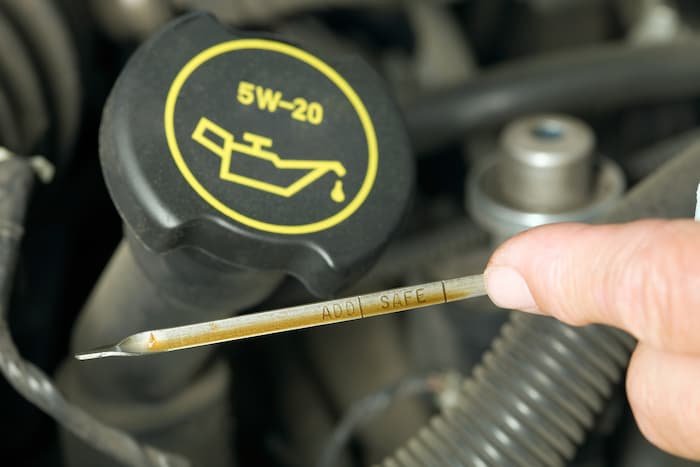Choosing the right oil for your vehicle is essential to ensure that your engine runs smoothly and efficiently. One of the most important factors to consider when selecting oil is its viscosity. The oil viscosity chart provides vital information on how thick or thin the oil is and helps you choose the right oil grade for your car. In this article, we’ll take a closer look at the oil viscosity chart, explain its components, and provide guidance on oil grade selection for your vehicle.
Discover the best Truck oil California for high-performance engines
What Is Oil Viscosity and Why Does It Matter?
Viscosity refers to the thickness or flowability of the oil. In simple terms, it describes how easily the oil flows through your engine’s components. The oil viscosity chart helps you understand the oil’s flow at different temperatures. Higher viscosity oils are thicker and flow more slowly, while lower viscosity oils are thinner and flow more easily. Selecting the right viscosity is crucial because it ensures your engine gets the proper lubrication, reducing wear and improving performance.
How to Read the Oil Viscosity Chart
The oil viscosity chart typically lists the oil’s viscosity grade, which is indicated by a number and letter combination. For example, 5W-30 is a common viscosity grade. The number before the “W” represents the oil’s viscosity at low temperatures, while the number after the “W” refers to its viscosity at high temperatures. The “W” stands for “winter,” indicating the oil’s performance in cold conditions. A lower number means the oil is thinner and works better in colder temperatures, while a higher number means the oil is thicker and provides better protection in hot conditions.
Why Oil Viscosity Affects Engine Performance
Choosing the right oil viscosity ensures that your engine is properly lubricated and protected, regardless of the driving conditions. If you use oil with a viscosity that is too low, it may not provide enough protection at high temperatures, causing excessive engine wear. On the other hand, using oil with a viscosity that is too high can lead to poor fuel efficiency and difficulty in starting the engine, especially in cold weather. The oil viscosity chart can guide you in selecting the optimal viscosity grade based on your car’s needs and driving environment.
How Temperature Affects Oil Viscosity
Temperature is one of the most important factors that influence oil viscosity. As the temperature changes, the viscosity of the oil also changes. In colder temperatures, the oil becomes thicker and flows more slowly, making it harder for the engine to start and for the oil to circulate properly. In hotter temperatures, the oil becomes thinner and may not provide enough protection. The oil viscosity chart shows the oil’s performance at both low and high temperatures, helping you choose the right oil grade for year-round driving.
Understanding Oil Grade Selection for Different Vehicles
Selecting the right oil grade is crucial for your vehicle’s performance and longevity. The oil grade selection depends on your vehicle’s manufacturer recommendations, driving conditions, and climate. Your owner’s manual will provide the recommended oil grade for your specific make and model. It’s essential to choose an oil grade that matches these recommendations to ensure your engine receives the proper lubrication. For example, some high-performance vehicles may require higher viscosity oils to handle the stress of heavy acceleration, while more economical vehicles may benefit from a lower viscosity oil for improved fuel efficiency.
How to Choose the Right Oil Viscosity for Your Vehicle
When selecting the right oil viscosity for your car, consider factors such as the climate, your driving habits, and the manufacturer’s recommendations. If you live in a cold climate, you may need a lower viscosity oil, such as 5W-30, to ensure proper lubrication during cold starts. In warmer climates, a higher viscosity oil, such as 10W-40, may be necessary to provide sufficient protection during hot weather. The oil viscosity chart is an invaluable tool that can help you make the best choice for your vehicle.

Common Oil Viscosity Grades and Their Uses
There are several common oil viscosity grades that are widely used in modern vehicles. These include 5W-20, 5W-30, 10W-30, 10W-40, and 15W-40. Each grade is designed for different types of vehicles and driving conditions. For example, 5W-20 is commonly used in newer vehicles and is ideal for cold weather conditions, while 10W-30 and 10W-40 are typically used in older vehicles or in warmer climates. By consulting the oil viscosity chart and your vehicle’s manual, you can easily determine which oil grade is best suited for your car.
The Role of Synthetic and Conventional Oils in Viscosity
When it comes to choosing oil, you can opt for synthetic or conventional oil. Synthetic oils are engineered to offer improved performance, providing better protection in extreme temperatures and lasting longer between oil changes. Conventional oils, on the other hand, are more affordable but may not perform as well under extreme conditions. Both types of oils are available in a variety of viscosities, so you can choose the right one based on the oil viscosity chart and your car’s needs. Many modern vehicles are compatible with synthetic oils, which provide better protection for high-performance engines.
How Oil Viscosity Affects Fuel Efficiency and Engine Longevity
The right oil viscosity doesn’t just protect your engine—it can also improve fuel efficiency. Thinner oils, such as 5W-20, reduce friction and allow the engine to run more efficiently, improving gas mileage. Thicker oils, such as 10W-40, can create more resistance in the engine, leading to reduced fuel economy. By consulting the oil viscosity chart and selecting the right oil grade, you can help your engine run efficiently while also extending its lifespan.
Conclusion: Selecting the Right Oil Viscosity for Optimal Engine Protection
Choosing the correct oil viscosity is essential for maintaining your vehicle’s engine and ensuring it runs smoothly. The oil viscosity chart is a valuable tool for understanding how different oil grades perform under various temperature conditions. By following the manufacturer’s recommendations and selecting the appropriate oil grade, you can improve your engine’s performance, fuel efficiency, and longevity. Whether you’re using synthetic or conventional oil, the key is choosing the right viscosity for your vehicle’s needs and driving conditions.
Explore top Oil filters for New York to keep your engine clean





